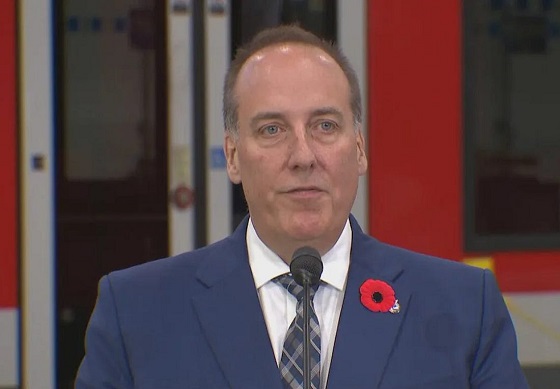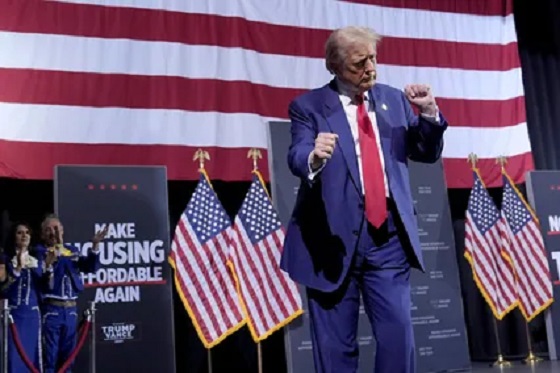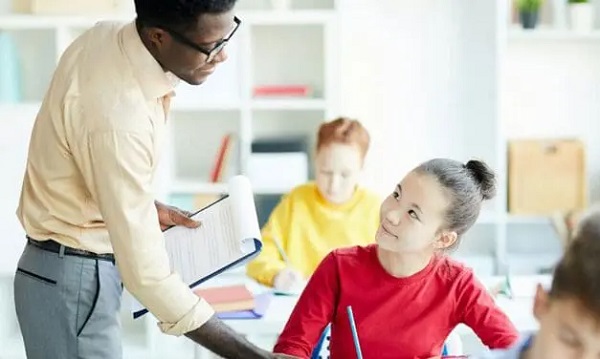Uncategorized
Koreas, US-led UN Command discuss disarming border area

SEOUL, Korea, Republic Of — The rival Koreas and the U.S.-led United Nations Command met Tuesday to discuss efforts to disarm a military zone the rivals control within their shared border under a peace agreement between the two countries.
The talks at the Panmunjom border village mark the first meeting between the Koreas and the U.N. Command to discuss ways to demilitarize the village’s Joint Security Area.
South Korea’s
The Korean militaries began clearing mines from the area at the start of this month following a broad agreement meant to reduce military tensions that was forged between North Korean leader Kim Jong Un and South Korean President Moon Jae-in at their summit in September. The Koreas plan to withdraw guard posts and firearms from the Joint Security Area once the demining is complete.
At the summit in Pyongyang, the Koreas also agreed to create buffer zones along their land and sea boundaries, as well as a no-fly zone above the border, and remove 11 front-line guard posts by December. Moon and Kim also committed to reviving economic
The Joint Security Area is overseen by the U.N. Command and by North Korea, with South Korean and North Korean border guards facing each other only meters (yards) apart. It is located inside the
The Joint Security Area has been used for diplomatic engagements but was also a site of occasional bloodshed during the Cold War, including the killing of two American army officers by
Moon has said the military agreement is an important trust-building step that will reduce border tensions and create diplomatic space. Some military experts say South Korea is at risk of conceding some of its conventional military strength before the North takes any material steps toward giving up its nuclear weapons program, the goal of global diplomatic efforts.
South Korea’s enthusiasm for engagement with its rival also appears to have created discomfort with the United States amid growing concerns that the North is lagging behind its supposed promise to denuclearize.
South Korea last week walked back on a proposal to lift some of its unilateral sanctions against the North following a blunt retort by President Donald Trump that Seoul could “do nothing” without Washington’s approval. South Korea’s foreign minister has also said U.S. Secretary of State Mike Pompeo expressed displeasure about the Koreas’ military agreement, fueling speculation that Washington wasn’t fully on board with the decision.
Trump has encouraged U.S. allies to maintain sanctions and pressure on North Korea until it denuclearizes. North Korea’s state media on Tuesday criticized Washington’s position, saying it threatens to erase the trust that has supposedly been created in high-level talks so far.
“It is difficult to advance the DPRK-U.S. negotiations even an inch with an obstacle called sanctions kept on the rail, however loudly the whistle is blown,” the North’s official Korean Central News Agency said in a commentary, referring to North Korea by its official name, the Democratic People’s Republic of Korea.
KCNA also made a rare jab directly at Trump — though not by name — saying that his recent comment that suggested Seoul can’t act without his approval outraged Koreans in both the North and South.
___
Associated Press writer Eric Talmadge in Tokyo contributed to this report.
Kim Tong-Hyung, The Associated Press
Uncategorized
Trump Admin Establishing Council To Make Buildings Beautiful Again


From the Daily Caller News Foundation
By Jason Hopkins
The Trump administration is creating a first-of-its-kind task force aimed at ushering in a new “Golden Age” of beautiful infrastructure across the U.S.
The Department of Transportation (DOT) will announce the establishment of the Beautifying Transportation Infrastructure Council (BTIC) on Thursday, the Daily Caller News Foundation exclusively learned. The BTIC seeks to advise Transportation Secretary Sean Duffy on design and policy ideas for key infrastructure projects, including highways, bridges and transit hubs.
“What happened to our country’s proud tradition of building great, big, beautiful things?” Duffy said in a statement shared with the DCNF. “It’s time the design for America’s latest infrastructure projects reflects our nation’s strength, pride, and promise.”
“We’re engaging the best and brightest minds in architectural design and engineering to make beautiful structures that move you and bring about a new Golden Age of Transportation,” Duffy continued.
Mini scoop – here is the DOT’s rollout of its Beautifying Transportation Infrastructure Council, which will be tasked with making our buildings beautiful again. pic.twitter.com/
9iV2xSxdJM — Jason Hopkins (@jasonhopkinsdc) October 23, 2025
The DOT is encouraging nominations of the country’s best architects, urban planners, artists and others to serve on the council, according to the department. While ensuring that efficiency and safety remain a top priority, the BTIC will provide guidance on projects that “enhance” public areas and develop aesthetic performance metrics.
The new council aligns with an executive order signed by President Donald Trump in August 2025 regarding infrastructure. The “Making Federal Architecture Beautiful Again” order calls for federal public buildings in the country to “respect regional architectural heritage” and aims to prevent federal construction projects from using modernist and brutalist architecture styles, instead returning to a classical style.
“The Founders, in line with great societies before them, attached great importance to Federal civic architecture,” Trump’s order stated. “They wanted America’s public buildings to inspire the American people and encourage civic virtue.”
“President George Washington and Secretary of State Thomas Jefferson consciously modeled the most important buildings in Washington, D.C., on the classical architecture of ancient Athens and Rome,” the order continued. “Because of their proven ability to meet these requirements, classical and traditional architecture are preferred modes of architectural design.”
The DOT invested millions in major infrastructure projects since Trump’s return to the White House. Duffy announced in August a $43 million transformation initiative of the New York Penn Station in New York City and in September unveiledmajor progress in the rehabilitation and modernization of Washington Union Station in Washington, D.C.
The BTIC will comprise up to 11 members who will serve two-year terms, with the chance to be reappointed, according to the DOT. The task force will meet biannually. The deadline for nominations will end Nov. 21.
Uncategorized
New report warns WHO health rules erode Canada’s democracy and Charter rights

The Justice Centre for Constitutional Freedoms has released a new report titled Canada’s Surrender of Sovereignty: New WHO health regulations undermine Canadian democracy and Charter freedoms. Authored by Nigel Hannaford, a veteran journalist and researcher, the report warns that Canada’s acceptance of the World Health Organization’s (WHO) revised International Health Regulations (IHR) represents a serious erosion of national independence and democratic accountability.
The IHR amendments, which took effect on September 19, 2025, authorize the WHO Director-General to declare global “health emergencies” that could require Canada to follow directives from bureaucrats in Geneva, bypassing the House of Commons and the will of Canadian voters.
The WHO regards these regulations as “binding,” despite having no ability or legal authority to impose such regulations. Even so, Canada is opting to accept the regulations as binding.
By accepting the WHO’s revised IHR, the report explains, Canada has relinquished its own control over future health crises and instead has agreed to let the WHO determine when a “pandemic emergency” exists and what Canada must do to respond to it, after which Canada must report back to the WHO.
In fact, under these International Health Regulations, the WHO could demand countries like Canada impose stringent freedom-violating health policies, such as lockdowns, vaccine mandates, or travel restrictions without debate, evidence review, or public accountability, the report explains.
Once the WHO declares a “Pandemic Emergency,” member states are obligated to implement such emergency measures “without delay” for a minimum of three months.
Importantly, following these WHO directives would undermine government accountability as politicians may hide behind international “commitments” to justify their actions as “simply following international rules,” the report warns.
Canada should instead withdraw from the revised IHR, following the example of countries like Germany, Austria, Italy, Czech Republic, and the United States. The report recommends continued international cooperation without surrendering control over domestic health policies.
Constitutional lawyer Allison Pejovic said, “[b]y treating WHO edicts as binding, the federal government has effectively placed Canadian sovereignty on loan to an unelected international body.”
“Such directives, if enforced, would likely violate Canadians’ Charter rights and freedoms,” she added.
Mr. Hannaford agreed, saying, “Canada’s health policies must be made in Canada. No free and democratic nation should outsource its emergency powers to unelected bureaucrats in Geneva.”
The Justice Centre urges Canadians to contact their Members of Parliament and demand they support withdrawing from the revised IHR to restore Canadian sovereignty and reject blind compliance with WHO directives.
-

 Business2 days ago
Business2 days agoWill Paramount turn the tide of legacy media and entertainment?
-

 Alberta2 days ago
Alberta2 days agoFederal budget: It’s not easy being green
-

 Health23 hours ago
Health23 hours agoLack of adequate health care pushing Canadians toward assisted suicide
-

 National15 hours ago
National15 hours agoWatchdog Demands Answers as MP Chris d’Entremont Crosses Floor
-

 Alberta14 hours ago
Alberta14 hours agoATA Collect $72 Million in Dues But Couldn’t Pay Striking Teachers a Dime
-

 Artificial Intelligence14 hours ago
Artificial Intelligence14 hours agoAI seems fairly impressed by Pierre Poilievre’s ability to communicate
-

 Energy2 days ago
Energy2 days agoA picture is worth a thousand spreadsheets
-

 Energy2 days ago
Energy2 days agoIt should not take a crisis for Canada to develop the resources that make people and communities thrive.









